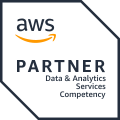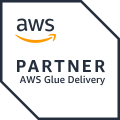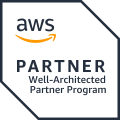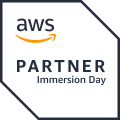The event of the year is over, and it’s time to gather the learnings. The announcements were more evolutionary than revolutionary in the big picture, and the new CEO Adam Selipsky seems to continue from where the former CEO Andy Jassy left off. Pushing the price-performance ratio with innovations on silicon level, pushing out new serverless solutions, and pushing development on data engineering capabilities.
Here are the conference highlights from our point of view, including Serverless, DevOps, and Data Engineering.
Local Zone Helsinki
Local Zone in Helsinki is huge news! AWS will open a Local Zone in Helsinki starting somewhere in 2022. But what does it mean?
AWS Local Zone is a physical data center that allows running low-latency applications at the edge, helps build hybrid cloud solutions, and to comply with local data residency requirements. It is not a full-blown AWS Region but a data center where you can extend your VPC into and set up and run AWS services like EC2 instances and containers running on ECS or EKS.
Link: https://aws.amazon.com/about-aws/global-infrastructure/localzones/locations/
New Sustainability Pillar for the AWS Well-Architected Framework
The AWS Well-Architected Framework has been there for a long time. The framework describes key concepts, design principles, and architectural best practices for designing and running workloads in the cloud. The framework has consisted of five pillars: Operational Excellence, Security, Reliability, Performance Efficiency, and Cost Optimization.
The new pillar focuses on the environmental impacts of running cloud workloads. Key topics include a shared responsibility model for sustainability, understanding impact, and maximizing utilization to minimize required resources and reduce downstream impacts.
Link: https://docs.aws.amazon.com/wellarchitected/latest/sustainability-pillar/sustainability-pillar.html
AWS re:Post
You can find the knowledge on AWS and the solutions to the trickiest cloud challenges all over the Internet. The official AWS service documentation is, on average, at an excellent level, but still, the documentation can’t contain all real-life scenarios developers face in their assignments.
AWS has now pushed out a new community-based approach, called AWS re:Post, to gather the developers around the Internet to spell out the questions and share their knowledge with the whole AWS developer community. Hopefully, the new community will start to flourish!
Link: https://repost.aws/
AWS Amplify Studio
An interesting toolset for full-stack low-code developers! AWS Amplify Studio is a visual development environment that lets developers quickly build and ship complete web and mobile apps in hours instead of weeks. With Amplify Studio, you can set up your backend dataset and data model in minutes and create a web or mobile user interface with a ready-made and customizable library of UI components. Amplify Studio exports all UI and infrastructure artifacts automatically as code, making it eventually possible to take control of what Amplify Studio has generated.
Link: https://aws.amazon.com/amplify/studio/
AWS Cloud Development Kit (AWS CDK) v2
The AWS Cloud Development Kit (AWS CDK) v2 for JavaScript, TypeScript, Java, Python, .NET, and Go (preview) is now generally available in a single package, making it easier to use the CDK and stay up-to-date with new versions. The key developments in the new CDK version are related to package management and partial deployments.
AWS CDK v2 consolidates the AWS Construct Library into a single package (aws-cdk-lib), eliminating the need to download individual packages for each AWS service used. In addition, a feature called CDK Watch helps with faster inner-loop development iterations on the application code (AWS Lambda handler code, Amazon ECS tasks, and AWS Step Function state machines). You can also preserve successfully provisioned resources by disabling automatic stack rollbacks, reducing deployment and iteration time.
Serverless Data Engineering services
Amazon EMR Serverless, Amazon Kinesis Data Streams On-Demand, Amazon Redshift Serverless, Amazon MSK Serverless. A strong message from AWS that Data Engineering is highly moving towards Serverless. And as data processing typically generates high peaks in processing capacity consumption, moving towards Serverless also has a significant effect on total hardware requirements and, hence, environmental sustainability.
Links:
- Amazon EMR Serverless: https://aws.amazon.com/blogs/big-data/announcing-amazon-emr-serverless-preview-run-big-data-applications-without-managing-servers/
- Amazon Kinesis Data Streams On-Demand: https://aws.amazon.com/about-aws/whats-new/2021/11/amazon-kinesis-data-streams-on-demand/
- Amazon Redshift Serverless: https://aws.amazon.com/blogs/aws/introducing-amazon-redshift-serverless-run-analytics-at-any-scale-without-having-to-manage-infrastructure/
- Amazon MSK Serverless: https://aws.amazon.com/about-aws/whats-new/2021/11/amazon-msk-serverless-public-preview/
Amazon Athena ACID transactions
AWS announced a public preview of Amazon Athena ACID transactions, powered by Apache Iceberg. ACID transactions is a new capability that adds write, delete, update, and time travel operations to Athena’s SQL data manipulation language (DML).
Athena ACID transactions enable users to make reliable, row-level modifications to their Amazon S3 data from Athena’s console, API, and ODBC and JDBC drivers. Built on the Apache Iceberg table format, Athena ACID transactions are compatible with other services and engines like Amazon EMR and Apache Spark. Iceberg tables, in general, open up many new use cases for Amazon Athena!
Link: https://aws.amazon.com/about-aws/whats-new/2021/11/amazon-athena-acid-apache-iceberg/
New features for AWS Control Tower
AWS appears to be enhancing multi-account architectures and governance quite a lot. AWS Control Tower offers an easy way to set up and govern a secure multi-account AWS environment. During the last couple of weeks, AWS has released a couple of new and improved features for Control Tower.
Firstly, AWS Control Tower Account Factory for Terraform (AFT). Using AFT, you can use Terraform to provision and customize AWS accounts managed by AWS Control Tower.
Secondly, preventive and detective guardrails related to data residency. These guardrails will prevent provisioning resources in unwanted AWS Regions, utilizing service control policies (SCPs) built and managed by AWS Control Tower. You can define that content cannot be created or transferred outside your selected Regions. AWS Control Tower also offers guardrails to further control data residency in underlying AWS service options, for example, blocking Amazon S3 cross-region replication.
Links:
- AWS Control Tower Account Factory for Terraform: https://aws.amazon.com/blogs/aws/new-aws-control-tower-account-factory-for-terraform/
- AWS Control Tower Region Deny and Data Residency: https://aws.amazon.com/blogs/aws/new-for-aws-control-tower-region-deny-and-guardrails-to-help-you-meet-data-residency-requirements/







